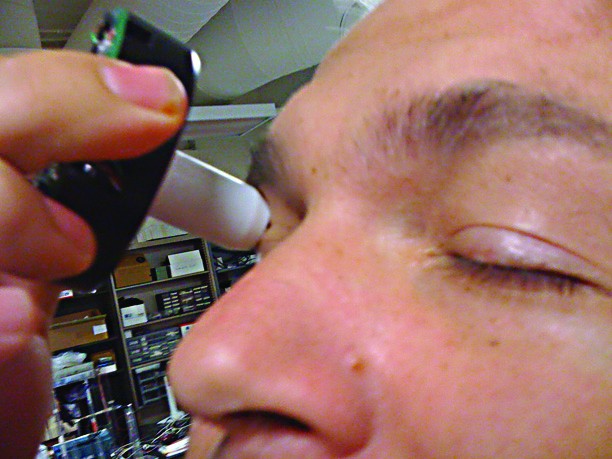A UA team’s device-in-progress could revolutionize the way glaucoma patients check their eye pressure.
Eniko Enikov, an associate professor of aerospace and mechanical engineering, is leading a UA team developing a handheld instrument, called a tactile tonometer, which will measure an eyeball’s thickness and infer its pressure. Elevated eye pressure can lead to glaucoma, a leading cause of blindness.
The eye produces fluid to keep its tissues alive. If there’s an imbalance between fluid production and drainage, pressure starts to build up. Treatment ranges from puncturing the cornea to release fluid to using eye drops, Enikov said.
Measuring eye pressure at the doctor’s office forces patients to numb their eyes with liquid and have their corneas flattened with a sterile instrument, said Gholam Peyman, professor of basic medical sciences at the Phoenix Biomedical Campus. The tactile tonometer they’re developing might only have to be applied to an eyelid, as the sensors will do the rest.
The National Science Foundation’s Innovation Corps program granted Enikov’s team $50,000. The program funds research with commercial potential and the UA team was one of 21 awardees from about 350 applicants, said Errol Arkilic, program director for Innovation Corps.
Peyman generated the idea for the instrument and now plans experiments and analyzes results. Assuming it’s successful, the tool will have a significant impact on glaucoma patients because they will be able to manage their disease better from home.
Similar home-use products already exist, but the UA team’s tool will stand out because it’ll be more affordable and still maintain its quality, Enikov said.
“If you make something more convenient, maybe you sacrifice something. The key is to achieve a balance, to have something that’s convenient but still produces the desired accuracy,” he said. “There’s no technology that does both.”
Emre Toker, the team’s business mentor and entrepreneurship mentor-in-residence at the McGuire Center for Entrepreneurship in the Eller College of Management, said if all the newly diagnosed Americans with glaucoma bought a home-use tonometer at $300 per unit, it would represent a total market of $270 million per year.
More than four million Americans have glaucoma, but only half know it, according to the Glaucoma Research Foundation.
“Home tonometry has been referred by some ophthalmologists as the ‘holy grail’ of glaucoma,” Toker said. “Our team’s goal is to design, develop and commercialize just such a device and help hundreds of thousands of glaucoma patients successfully manage this disease.”
Commercializing the product is essential, but Enikov said making a product that helps people is the top priority.
“We want to know if it manages glaucoma better,” Enikov said. “If over time it shows that by people using something like this, it extends the length that they can use their eyes, that’ll be success.”









